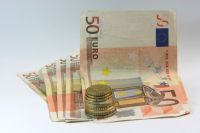During a period spanning roughly 1995 to 2008, when the global financial crisis erupted, Ireland experienced a period of unprecedented economic growth. This was seen as being due to a convergence of different factors including a low corporate taxation rate, the local establishment of branches of major technological companies (e.g. Intel, Microsoft), and an increased capacity for production that itself was attributed to the receipt of European Union structural funds and social funds, and the clever investment of such into education.
Some will also place the emergence of the ‘tiger’ further back to 1990, when a job creation process began that would see the nation’s employment boosted from 1.1 million to 1.9 million, and when the nation’s population itself surged in accordance. Naturally, this also saw a decline in the country’s ‘brain drain’ or emigration of skilled, more highly educated employees. Lest we attribute this purely to the benevolent intervention of the outside parties mentioned above, local innovations – for example, the budget airline Ryanair – helped to overturn state monopolies on certain industries.Fall of the tiger
In the year 2006, the nation had a per capita GDP second only to Luxembourg among the EU nations, rising from just over $5,000 USD in the mid-1970s to nearly $30,000 USD in the foregoing decade. It would seem that the nation enjoyed a good deal of prosperity, but what is its standing today? For a sign of how rapidly things can change, perhaps we need to look no further than the 2008 Annual Competitiveness Report in which Taoiseach Brian Cowen invokes, in his foreword, “difficult and uncertain times”, and National Competitiveness Council chairman Don Thornhill claims a period of “economic transition and uncertainty.”
Indeed, an Irish recession began almost immediately after Ireland obtained the high GDP numbers mentioned here, and the GNP numbers – often seen as a better indicator of personal wellbeing than GDP, seemed to be in free fall since 2007. Ireland’s entry into the global banking crisis is one culprit of this situation: this twisting tale involves the bursting of a local real estate bubble, which was fueled by Irish banks’ lowered lending standards, with those banks’ own funding coming from loans acquired on the interbank (particularly German) lending market. Meanwhile, by 2010, the unemployment rate in Ireland was some 10% higher than it had been during the “tiger” period, and emigration began anew. During this period, the ratio of personal debt to disposable income also stood at nearly 2:1, making for far less discretionary spending.
Signs of life
The time for despair may be passing, however, as the European Commission has reported a slight rate of growth in 2012, to be followed by more growth in the single percentage points in the years to come. For this to be possible, certain sectors of the Irish economy – the manufacture of exports, in particular – will have to kick in to high gear to compensate for the aforementioned emigration and ‘downsizing’ within the public sector.
The governmental share of the debt-to-GDP ratio is expected to finally peak this year, and to decline shortly thereafter. The effects of a marginally improving situation on the unemployment front, and in the realms of inflation and personal consumption, may not manifest themselves in an unequivocally noticeable way in the next couple of years, but both of these situations are seen by the EC as getting better. Isolated success stories in Ireland, such as the Activision / Blizzard games company, always hold out hope to attract more skilled ‘tech’ laborers to the country, particularly as they flee American bases for the industry (read: California) due to the cost of doing business there, and look for other fashionable Anglophone locales in which to expand operations.
As ever, resorting to gloomy prognostications in times of actual, though only slightly perceptible, improvement can only hurt the recovery process, and turn into a self-fulfilling prophecy. The inescapable smallness of Ireland compared with other nations, though, makes for an environment where business and fiscal decisions can be made more quickly. However, it also presents an environment where such panic can spread quickly.
Many analysts will also note the fact that Ireland has already weathered a recession in recent history, with its setbacks in the 1980s seeing many of the same problems that typify its post-“Tiger” era: high inflation and cost of investment, and a cynicism among young professionals who sought to ply their trades elsewhere than Ireland. If one takes the optimistic view that the country’s modern economy goes in cycles rather than hurtling irreversibly towards some terminal point of either wealth or poverty, there is plenty of hope for the nation.

